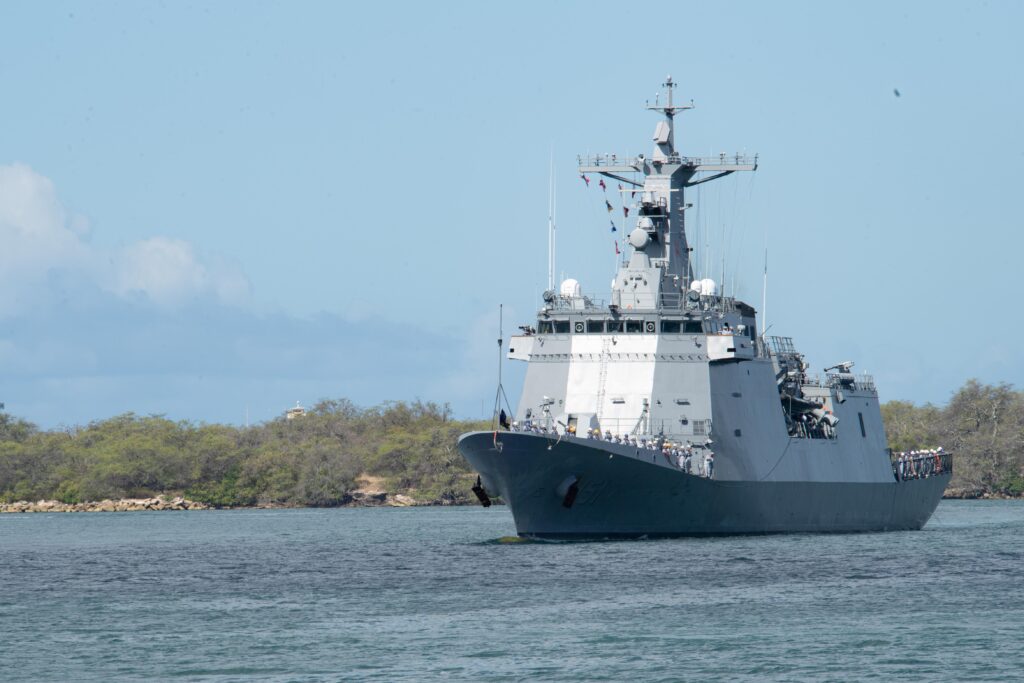
MANILA, Philippines — Demonstrators gathered outside the Chinese embassy in Manila on July 12 to mark the sixth anniversary of 2016 international court arbitration ruling that invalidated Beijing’s vast territorial claims in the South China Sea. The Philippines say China continues to harass its vessels and personnel near the disputed islands and in the country’s exclusive economic zone.
In a statement issued by the U.S. Embassy in Manila on July 12, U.S. Secretary of State Antony Blinken called on the Peoples Republic of China to comply with the decision by an arbitration tribunal after the Philippine government complained in 2013 about China’s increasingly assertive claims and aggressive actions around its islands in the South China Sea.
China has unilaterally claimed that virtually all islands in the South China Sea belongs to it.
Blinken said the Arbitral Tribunal, which was constituted at The Hague under the 1982 Law of the Sea Convention, delivered a unanimous decision, which is final and binding on the Philippines and the PRC. “In its ruling, the Tribunal firmly rejected the PRC’s expansive South China Sea maritime claims as having no basis in international law. The Tribunal also stated that the PRC has no lawful claim to the areas determined by the Arbitral Tribunal to be part of the Philippines’ exclusive economic zone and continental shelf. We also reaffirm that an armed attack on Philippine armed forces, public vessels, or aircraft in the South China Sea would invoke U.S. mutual defense commitments under Article IV of the 1951 U.S.-Philippines Mutual Defense Treaty.”
In a May address at George Washington University, Blinken said China is advancing unlawful maritime claims in the South China Sea and undermining peace and security, freedom of navigation, and commerce.
Philippine Foreign Secretary Enrique Manalo said Tuesday called the 2016 arbitration ruling an “indisputable” decision.
“These findings are no longer within the reach of denial and rebuttal and are conclusive as they are indisputable,” said Manalo. “The award is final.”
Despite rhetoric by the previous president of the Philippines, Rodrigo Duterte, where he said the Philippines would move away from U.S. influence and establisher closer ties with China, he later had a change of heart when his overtures failed to deliver results.
The new Philippine President Ferdinand Marcos Jr., who assumed office on June 30, and his government are expected to seek closer ties with the U.S. And today, the U.S.-Philippines partnership remains strong.
In August of last year, Adm. John C. Aquilino, commander of U.S. Indo-Pacific Command, traveled to the Philippines to mark the 70th anniversary of the U.S.-Philippine Mutual Defense Treaty and reaffirm the U.S. commitment to the alliance with the Philippines.
“Both of our nations have made it clear that we are committed to the alliance, and that we remain prepared to fight alongside and defend each other using all of our capabilities to preserve peace and stability in the region — just as we have before,” Aquilino said.
On May 23 of this year, Aquilino and the chief of staff of the armed forces of the Philippines, Gen. Andres Centino, signed the Maritime Security (Bantay Dagat) Framework at USINDOPACOM headquarters on Camp Smith, Hawaii. According to a statement from INDOPACOM, “Bantay Dagat” is a Tagalog term that means “Guardian of the Sea,” illustrating U.S. and Philippine resolve to improve regional maritime domain awareness and confront maritime challenges together. The framework is designed to enable a holistic, intergovernmental approach to maritime security through the interoperability of U.S. and Philippine maritime forces and option to include interagency organizations, and is a testament to the strength of the U.S.–Philippines alliance.”
The Philippine navy’s 2,600-ton, 351-foot guided-missile frigate BRP Antonio Luna (FF-151) is currently participating in the 2022 Rim of the Pacific exercises off Hawaii.
- A Day to Remember - September 11, 2023
- Indo-Pacific Maritime Security Exchange will examine emerging capabilities and capacity - July 12, 2023
- Cold Waters Spark Warm Relationship - April 20, 2023






